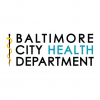Opioid Restitution Fund
Overview

Opioid overdoses have been one of the most deadly public health epidemics in our nation's history, leading to more than 80,000 deaths annually in the United States. In the last two decades, Baltimore has been disproportionately impacted, with more than half a billion opioid pills permeating the Baltimore area between 2006 and 2019, driving an increase in overdose deaths. Public health experts have estimated that more than 80% of Baltimore’s opioid use disorder cases between 2010 and 2021 began with prescription opioids, leading residents to turn to illicit drugs
Baltimore City makes up 9% of Maryland’s population but, now through the first seven months of 2024, represents 44% of Maryland’s overdose deaths. Annually, Baltimore has an average of more than 2 overdose deaths per day.
In response, in 2018, Baltimore City initiated legal action against various pharmaceutical manufacturers and distributors for their role in creating the opioid epidemic in Baltimore City by failing to take reasonable steps to prevent the diversion of their highly addictive prescription opioids. The City then opted out of the global settlement that would have provided the City with much less restitution money than it deserved, and decided instead to pursue its litigation against some of the largest pharmaceutical companies in the world
That decision has paid off. As of August 28, 2024, the City has reached settlement agreements with Allergan, Cardinal Health, and CVS, totaling $242.5 million and already eclipsing the amount the City would have received under the global settlement.
- Allergan: $45 million
- Cardinal Health: $152.5 million
- CVS: $45 million
- Walgreens: Pending litigation
- Johnson & Johnson: Pending litigation
- Cencora (formerly AmerisourceBergen): Pending litigation
- Teva: Pending litigation
- McKesson: Pending litigation
The City anticipates additional recoveries through settlement or trial in pending cases against the manufacturers and distributors that caused and perpetuated the opioid epidemic. This page will be updated regularly to reflect additional victories
The recoveries from these cases will be used to create the Baltimore City Opioid Restitution Fund.
Executive Order Issued By Mayor Scott
On August 29, 2024, Mayor Scott released an Executive Order establishing the City’s approach to managing the restitution funds received, including provisions that:
- Establish a separate Baltimore City Opioid Restitution Fund
- Establish a trust fund that will sustain the impact of these funds for at least 15 years
- Create positions in the Mayor’s Office including an Executive Director of Overdose Response and an Opioid Restitution Program Manager
- Establish a Restitution Advisory Board
- Outline key documents that the City will publish for accountability and transparency
For more details, you can read the full Executive Order, or read the overview of the Executive Order.
To apply for the Restitution Advisory Board, fill out The Baltimore City Restitution Advisory Board application.
If you have comments or questions on the Executive Order, please email overdoseresponse@baltimorecity.gov.
Community Engagement
In the Executive Order, the Mayor detailed the process and procedures of the Opioid Restitution Fund governance and financial structure. As part of that effort, the City of Baltimore plans to engage in robust community engagement meetings across the city to hear from individuals and groups impacted by the overdose crisis.
The City’s proposed community engagement process will include:
- Community Listening Sessions
- Focus Groups
- Online Public Feedback Form
More details on the community engagement plan and schedule of events will come soon.
Next Steps
Steps for Administering Opioid Restitution Funds

Image Description: A vertical flowchart titled "Steps for Administering Opioid Restitution Funds" with ten sequential steps, each in a blue box connected by arrows. The steps are as follows:
-
Establish Governance and Finance Structure for Restitution Funds
-
Mayor Scott Announces Executive Order: Administration of Funds from Restitution Funds - We are Here
-
Hire Executive Director of Overdose Response and Opioid Restitution Program Manager
-
Establish Restitution Advisory Board
-
Conduct Community Engagement and Needs Assessment
-
Publish City-wide Overdose Response Plan
-
Set Annual Funding Priorities
-
Release Notice of Funding Availability
-
Select Programs to Fund
- Distribute Funds for FY26
Additional Resources:
-
Look up and connect with community resources in Baltimore City through Charm Care
-
Need immediate emotional support? Call 988 to connect to a counselor who can help
-
Learn about Baltimore City Health Department's Substance Use services and resources
-
Access the Baltimore City Health Department Overdose Dashboard
-
Access the Maryland Department Health’s Overdose Dashboard
-
Request The Baltimore City Health Department's Naloxone Training
-
Sign up for Baltimore City Health Department’s Virtual Naloxone training
-
Learn more about the resources and information of the Maryland Syringe Services Programs
-
Get free Naloxone, Fentanyl Test Strips, and Xylazine Test Strips
Funding Opportunities
*** Baltimore City Restitution Fund Notice of Funding Availability will be announced in early Spring 2025. Please continue to check here for updates.
How to Get Involved
Contact Us
